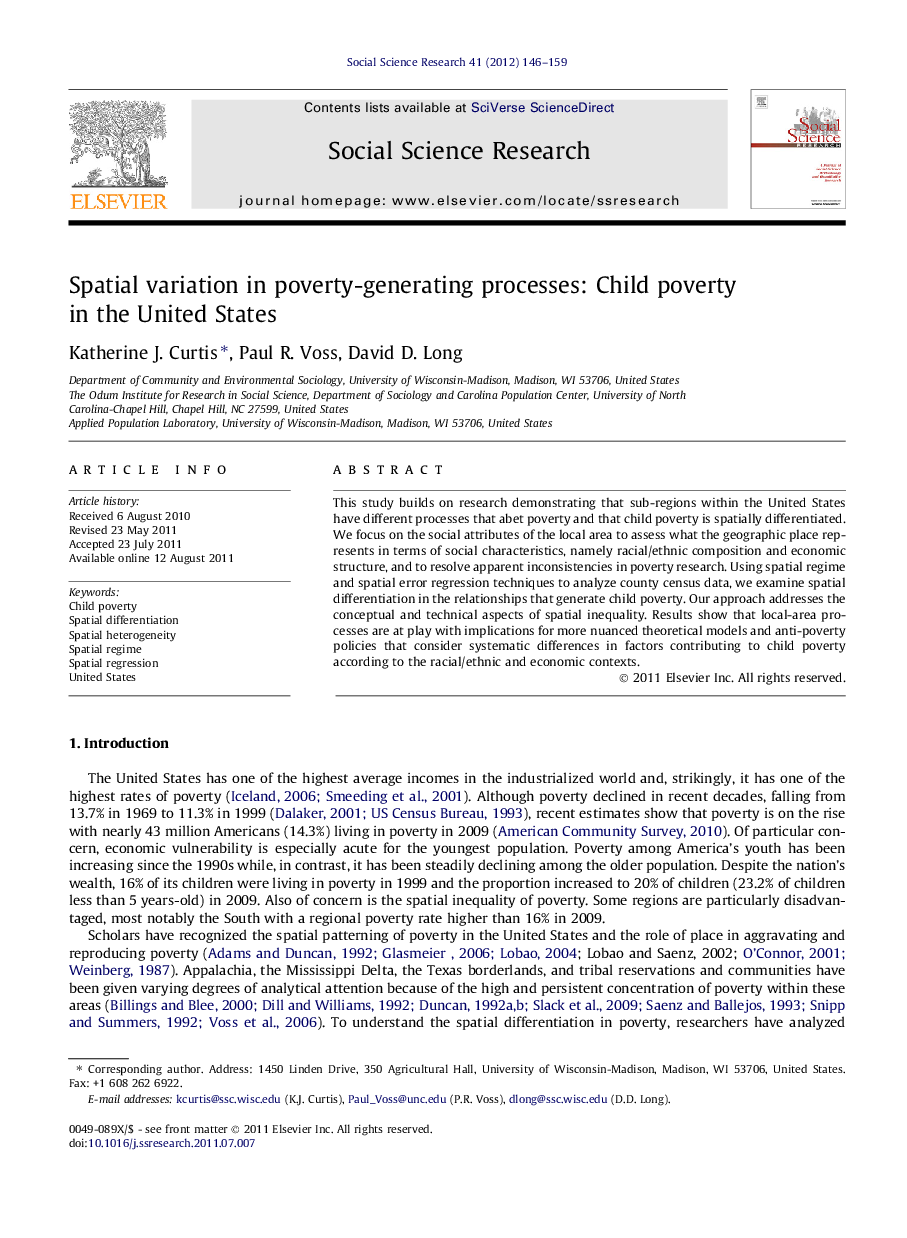| Article ID | Journal | Published Year | Pages | File Type |
|---|---|---|---|---|
| 956070 | Social Science Research | 2012 | 14 Pages |
This study builds on research demonstrating that sub-regions within the United States have different processes that abet poverty and that child poverty is spatially differentiated. We focus on the social attributes of the local area to assess what the geographic place represents in terms of social characteristics, namely racial/ethnic composition and economic structure, and to resolve apparent inconsistencies in poverty research. Using spatial regime and spatial error regression techniques to analyze county census data, we examine spatial differentiation in the relationships that generate child poverty. Our approach addresses the conceptual and technical aspects of spatial inequality. Results show that local-area processes are at play with implications for more nuanced theoretical models and anti-poverty policies that consider systematic differences in factors contributing to child poverty according to the racial/ethnic and economic contexts.
► We build on research showing sub-regions have different processes that abet poverty. ► We use spatial regression to examine differentiation in relationships generating child poverty. ► Factors contributing to child poverty differ according to racial/ethnic and economic contexts. ► Local-area processes have implications for theoretical models and anti-poverty policies.
